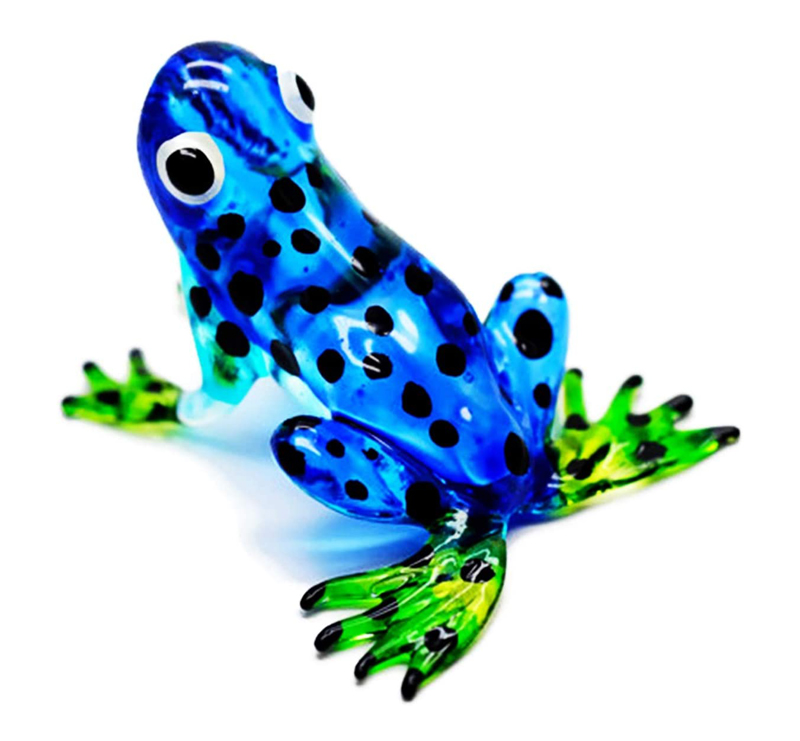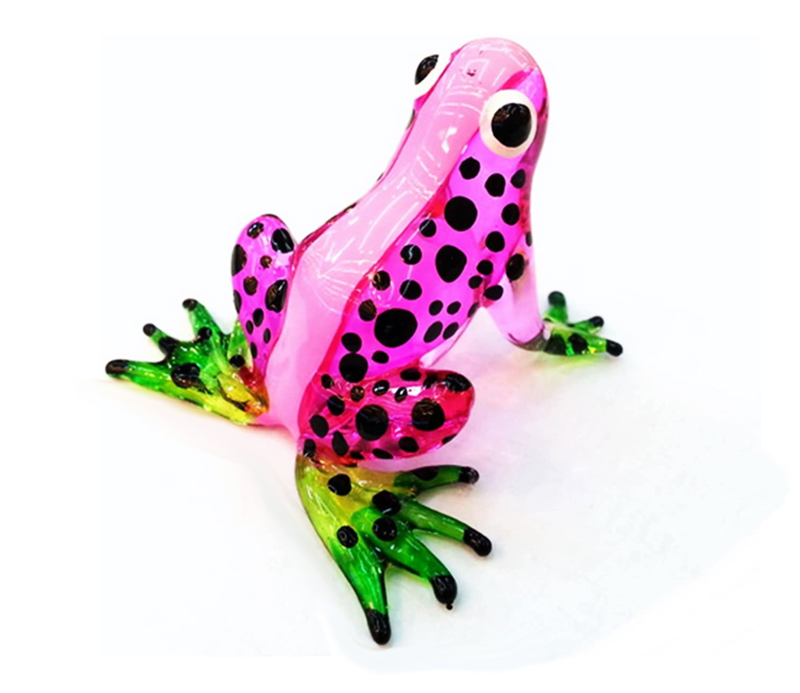Blue Glass Dyeing Poison Frog Statue
This Blue Glass Frog Statue was made with high-quality glass and formed into Blue Poison Frog shapes in their natural form. Hand-painted piece show intricate bright blue, with black spot elements and detailed coloring that you will surely appreciate. It have black spots on their body, limbs and on their toes. Blue poison dart frogs are also known as blue dyeing poison-arrow frog. If you love amphibians, then these tiny frogs are for you. The Dyeing Dart Frog, Dyeing Poison Dart Frog, tinc (a nickname given by those in the hobby of keeping dart frogs), or Dyeing Poison Frog (Dendrobates Tinctorius) is a species of poison dart frog. It is among the largest species, reaching lengths of 50 mm (2.0 in). This species is distributed throughout the eastern portion of the Guiana Shield and Venezuela, including parts of Guyana, Suriname, Brazil, and nearly all of French Guiana. The specific name Tinctorius comes, however, not from the variety of colors, but from the legends of some indigenous tribes. It has been said that tribe members used the frog poisons to cause green parrot feathers to grow different colors. Like most species of the genus Dendrobates, D. Tinctorius is highly toxic if consumed.
It produces pumiliotoxins and allopumiliotoxins that the frog uses for self-defense. While pumiliotoxins are weaker than their derivative allopumiliotoxins and the batrachotoxins secreted by Phyllobates species, they are sufficiently toxic to discourage most animals from feeding on them. In the case of D. tinctorius, the toxins cause pain, cramping, and stiffness when the frogs are handled roughly. Due to the toxins of the frogs, animals that feed on D. tinctorius will typically learn to associate the bright colours of such frogs with the vile taste and pain that occurs after a frog is ingested. As it is such a variable species, different color morphs of D. tinctorius have varying degrees of toxicity and many can cause serious effects on humans including death. Local tribes use Dyeing Poison Frog for decoration. Feathers are plucked from the back of young parrots and the frogs are rubbed on the parrots’ exposed skin. When the feathers regrow, the toxin causes them to appear yellow or red rather than green. These altered feathers are highly prized by the indigenous tribes. Blue Glass Dyeing Poison Frog Statue sizes: 2.5 inches / 6.5 cm x 2.5 inches / 6.5 cm x 1.5 inches / 4 cm.
Blue Glass Frog Statue on Amazon.
Blue Glass Frog Statue on eBay.
Animals Statues and Frogs Statues.





You must be logged in to post a comment.